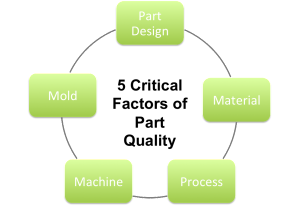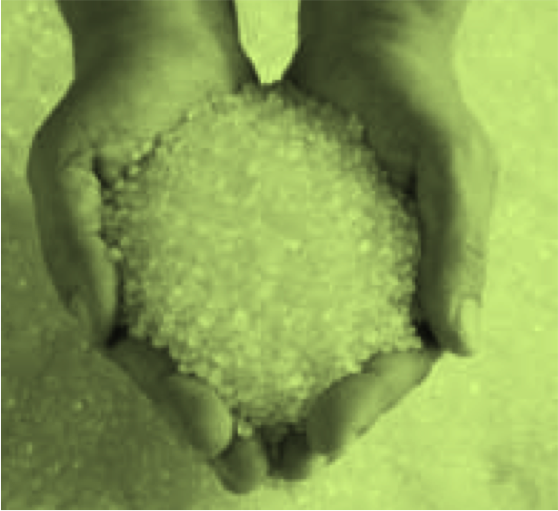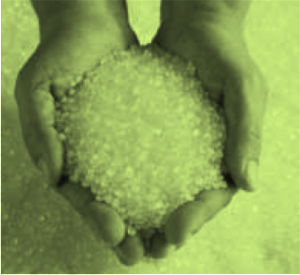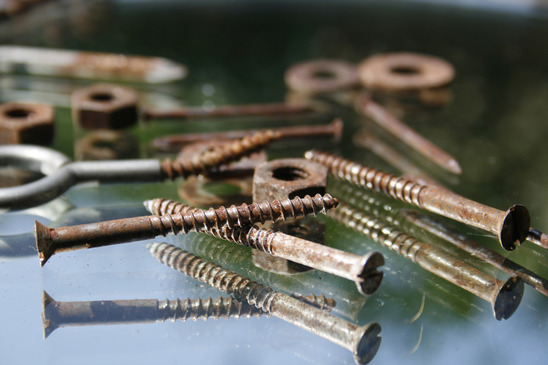
by Admin | Jun 24, 2015 | Manufacturing, Plastics, Recent Posts |
Optimizing The Molding Process

The use of Scientific Molding has had a dramatic impact on the efficiency of molding operations. The following 6 steps should be considered to help optimize the process robustness of your molding operation.
Viscosity Curve
The scientific study of viscosity curve helps show the effect produced by injection speed on viscosity, and it also shows the most consistent region of viscosity. By monitoring this data, it reduces the variation between production lots. The idea of “inject as fast as you need to and not as fast as you can” is directly related to this study, as slower speed are acceptable if allowable.
Cavity Balance Study
This aspect of the process reveals the fill balance between every cavity. It aids in the achievement of better consistency for between cavities. It facilitates studying the % imbalance and provides case-based results.
Pressure Drop Study
This study shows if the process pressure is limited, which can impact consistency. It is recommended to record pressure drop through the nozzle and at the end of fill. Recording pressure drop at other sections is important only in case of pressure-limited processes.
Cosmetic Process Window Study
This reveals the mold’s capability to form parts that are cosmetically acceptable. Technically, a large Cosmetic Process Window is the initial step towards a robust process.
Gate Seal Study
This shows the action of gate seal. It aids shot to shot consistency. However, it is not advisable to perform a Gate Seal Study on a Hot Runner Mold. Also, if the graph doesn’t flatten, it indicates time for the ‘Pack and Hold’ action.
Cooling Time Study
This aspect shows the effect of cooling time on the production. It also improves the cycle efficiency. It is also recommended to perform the study at higher end of mold temperatures.
The uses of advanced concepts in injection molding are increasing at an amazing pace. By utilizing the information from the above 6 steps, progressive molders will be better equipped to improve production efficiencies and increase throughput.
The Nanoplas’ line of injection molding products are engineered to help improve efficiencies and lower scrap rates. To learn more about how they can help your injection molding operation, contact us today!

by Admin | Jun 17, 2015 | Manufacturing, Recent Posts |
 Taking Injection Molding To The Next Level
Taking Injection Molding To The Next Level
When an industrial science approach is applied to the molding process, it takes injection molding to a higher level of precision and more importantly, repeatability. It is especially relevant and applicable for complex and critical-use parts.
Scientific basis of injection molding is based on sensors and sophisticated software to monitor every phase of the molding process. It helps engineers and technicians control and adjust critical variables, like flow rate, temperature, cooling temperature, and fill rate. This further helps maintain a precise, repeatable process of production.
Benefits of Using Scientific Molding Technique
The scientific technique of injection molding is highly beneficial during the stage of molding, once the tool has gone through the process of development and debugging. The process helps analyze the fill pack and hold the stages individually.
The sensor data also facilitates a deep and detailed understanding of every stage for the engineering team. This, in turn, helps detect and correct any variations that occur in key parameters, like flow rates, temperature, moisture content and viscosity, in real time, thereby ensuring consistent quality.
Some other benefits associated with use of scientific injection molding are as follows:
- Reduced consumption of material
- Higher yields
- Reliable documentation of every part
- Provides consistent repeatability as well as quality from part to set-up for every production cycle
- Makes the process more optimized to provide best cycle times possible.
- Provides better control over flow without any weld lines or flaws over the surface
By taking a scientific approach to your molding projects, you will be able to track and control critical factors, and through data analysis be better able to manage workflows and production. With products like those in the Nanoplas family of injection mold release coatings, Injection Mold Cleaners, Injection Mold Rust Preventatives and Injection Mold Lubricating Greases, and the data and insight you can gain from taking a scientific approach, the opportunity for increased production efficiencies, lower scrap rates and cost savings is possible.
Contact Nanoplas to learn more about how our products can help your operation achieve its goals.

by Admin | Jun 10, 2015 | Manufacturing, Recent Posts |
 Material selection is one of the most crucial factors when developing an injection mold design. There are a lot of excellent material suppliers offering quality materials for the injection molding process. Many also offer different grades or blends of materials to choose from. However, one wrong decision can have major effects on the production process and the final product.
Material selection is one of the most crucial factors when developing an injection mold design. There are a lot of excellent material suppliers offering quality materials for the injection molding process. Many also offer different grades or blends of materials to choose from. However, one wrong decision can have major effects on the production process and the final product.
Material Selection for Injection Molding
Generally, material selection is dependent on the use of the part being manufactured or fabricated. Although almost every part is unique, there are certain, consistent aspects that you should consider while choosing injection-molding materials. These considerations can help you save both cost and potential headaches for your project.
Some of the most important considerations are as follows:
Raw Material Quantities – Order The Right Amount
Try to order enough material at one time. No one wants to be left with surplus raw material, but you also don’t want to be short or run out in the middle of a production run.
Choose The Right Material
It may seem like an obvious statement, but different types and grades of plastics and polymers have different uses and properties. Be sure that the material you have selected is appropriate and compatible for the use of the end product. The plastic requirements for a medical part may be significantly different than that of a sub assembly component for an automotive application. Considerations like temperature, biological and chemical interactions, food or animal contact and more must be considered.
Minimize Secondary Processes
Minimizing secondary processes like custom inserts, trimming and even pad printing, can help reduce the overall cost of a project. All these processes entail additional costs and setup time. And in many cases can be eliminated based on the end us of the product, or in the initial design of the mold. In some cases, changes in the material used or even the use of different mold release (like Nanoplas’ Nano Mold Coating) can help reduce or eliminate the need for some secondary processes or a tooling modification.
Mold Design
This is truly an art and science in and of itself. The design of your mold can have significant impact on the materials that can be used, the secondary processes that will be required and the final appearance of the part, to name just a few.
Material selection is complex process. It’s important to select materials that meet the specifications and the end use while also taking into account cost, design and service conditions. It is also imperative to follow the material manufacturers’ data sheets and performance matrix.
One aspect of material selection that is often overlooked is how the mold maintenance and mold release products that are used can impact the materials selected. The ability to mold through a rust preventative or grease without bleeding or the ability to use an existing tool without modification because of a new mold release technology can save time, cost and hassle.
To learn more about how the integrated family of Nanoplas products can help reduce scrap, increase production efficiencies and save time for your injection molding operation, contact us today!

by Admin | Jun 3, 2015 | Manufacturing, Recent Posts |
 How SMED and Mold Maintenance Work Together
How SMED and Mold Maintenance Work Together
Time is money in the production business and the more you waste, the more you lose. The Single-Minute-Exchange of Die (SMED) methodology may allow you to successfully implement a lean production process in your injection molding business, and when combined with a progressive mold maintenance program, allow you to reduce the time needed for changeovers.
Why Lean?
Lean manufacturing aims to eliminate unnecessary waste during production, and uncovering ways that will add value by eliminating or decreasing other processes or variables than can adversely effect production.
With the rising cost of transportation and raw materials, it has become increasingly important for injection molders to produce a wide variety of products. With that product expansion, the need for efficiencies and cost reductions has generated a lot of interest in the lean method.
Potential Problems in High Variety Production
- Lengthy and difficult set up procedures.
- Expensive, high-tech machines are required to increase production capacity and flexibility.
- Waste arises out difficult changeovers, lack of adequate maintenance or equipment not being ready when needed.
SMED (Single-Minute-Exchange of Die and Maintenance
Globalization and Just-In-Time models have increased the need for production of smaller lots on a more frequent basis. This shift in format requires accelerated set-ups to maintain flexibility, to meet customer demands, and to remain competitive.
SMED allows you to make the necessary reductions in changeover time to achieve a just-in-time pace. The practices under this system achieve machine changeover in less than 10 minutes (single digit minutes) thus reducing the time during which production is down. The SMED approach does not only just reduce changeover times but also the overall labor involved.
The goals of SMED are:
- Reduction in inventory
- Reduced changeover time
- More efficient changeover process
- Flexibility for reduced batch/lot size
- Improve flexibility in equipment usage
- Reduce impact and downtime on equipment
- Meet customer demand
SMED Process
SMED involves certain steps, with a basic overview as follow:
- Elimination of Non-Essentials: Observe and record the areas where change outs are required, then eliminate all non-essential activities where possible, especially duplication. By eliminating non-essential activities it is possible to speed things up and reduce waste.
- External Set-up: Get all the materials and supplies to be used in place so that they are available when required. Some things to consider for this include: color code all items needed, create checklists and develop and maintain uniform standards and procedures
- Internal Set-up: Replace complex tools where possible with more simple equipment to prevent unnecessary waste. Use functional jigs and fixtures, levered or one-turn fasteners, preset guides, pins and notches. Remember the goal is to work efficiently but still but also effectively.
- Measure: The SMED approach entails change, but to know if you’re on the right track it is vital to measure business performance every time. It is a successful way of knowing if improvements are being made or not. Based on the results obtained, corrective or proactive measures can be taken. Consider the time lost/wasted as the benchmarks you will need to improve upon.
Benefits of Equipment Maintenance
The SMED system also requires proper maintenance of tools and equipment. When equipment is well looked after, it is more reliable. It will result in production efficiencies and lower costs due to fewer breakdowns and equipment downtimes. Also, with an effective maintenance program, equipment required will be available as and when necessary reducing wasted time and high costs due to idle equipment and staff.
It is also imperative that molds are stored properly to ensure optimal performance and longevity. Instead of leaving it on the floor or on pallets where it can sustain damage, it is best to store molds in a designated storage area or if possible on shelving or racks. Furthermore, it is best to use rust preventatives and grease that require little or no pre-production cleaning for start-up.
Many companies treat mold maintenance as an after thought, and have yet to explore how new products (like the Nanoplas line of mold maintenance products) can have a significant impact on their set-up and speed to press times. These gains in production efficiencies when combined with an approach like SMED can have a real impact on the bottom line.
To learn more about how the integrated family of Nanoplas products can help reduce scrap, increase production efficiencies and save time for your injection molding operation, contact us today!

by Nanomold Coating | Oct 16, 2014 | Recent Posts |
 Your mold maintenance strategy should include rust prevention. If you do not use the right methods to prevent your tooling and mold from rust, you may as well put paid to your manufacturing process. Once rust affects your molds and tooling, it will be quite expensive to get rid of. And this is one expense that’s unnecessary if you have the right mold maintenance.
Your mold maintenance strategy should include rust prevention. If you do not use the right methods to prevent your tooling and mold from rust, you may as well put paid to your manufacturing process. Once rust affects your molds and tooling, it will be quite expensive to get rid of. And this is one expense that’s unnecessary if you have the right mold maintenance.
Choosing the Right Anti-Rust Product
It’s important you choose an anti-rust product that is designed for industrial use. The product should be such that it forms a gel-like film in the mold and if it’s scratched or nicked, it should flow back to its original position.
Typically, a good rust preventive does not have wax or any similar ingredient because it can accumulate on the mold surface. If this happens, you would have to spend more time, money and effort cleaning up the surface of the mold. The preventive should have the ability to displace tiny droplets of water that condense on the surface of the mold, so that the water does not come in contact with the mold surface, leading to rust formation.
Rust Preventive Measures
There are several methods and techniques to prevent rust formation during mold maintenance. You can use one or all of these methods for optimal results.
Spraying the Mold: One of the most effective ways to prevent rust in injection molds is by spraying the right anti-rust product into the mold right after the molding process is over. At this point, the mold is warm and the product will adhere to the mold surface until it can be taken to the tool room for thorough cleaning. Once the mold is cleaned, once again the rust preventive can be coated properly on the mold. As a result, your mold gets a dual-layer of protection that will prevent corrosion at all costs.
Protecting the Sprue Bushings: While it is important to protect the interior of the mold from rust, you should never neglect the sprue bushings. If the bushings get corroded, you will find it tough to get a seal using the barrel nozzle. Even the exterior surface of the mold should be coated with anti-rust preventative to ensure optimal protection. This will prevent the bases of the mold from rusting. If the bases corrode just where they fasten onto the plates, it will be difficult to keep the two halves of the mold parallel.
Watch Out for Bleed-Out: Depending on the type of rust preventative you use and the method of application, the preventative can bleed-out solvents, oils, and anti-rust compounds when the mold is used. In such cases, you can use a solvent cleaner to remove the bleed-out.
When it comes to rust preventive, you should have a mold maintenance process that is carried out on a daily basis. The process should involve cleaning the mold at the end of the day with a high quality solvent cleaner followed by a coating of rust preventative.
For more information about rust preventatives and best practices for mold maintenance, please feel welcome to contact us.
by Nanomold Coating | Oct 10, 2014 | Manufacturing, Recent Posts |
Why implement lean manufacturing?
Here’s a quick article that outlines the benefits of the manufacturing mindset that is changing the way manufacturing is being done. The implementation of lean manufacturing through trying to make value flow at the pull of the customer prevents and eliminates the 7 categories of waste in your processes: Transport, Inventory, Motion, Waiting, Over-processing, Overproduction, and Defects.
Learn more about lean manufacturing by reading the full article HERE.






